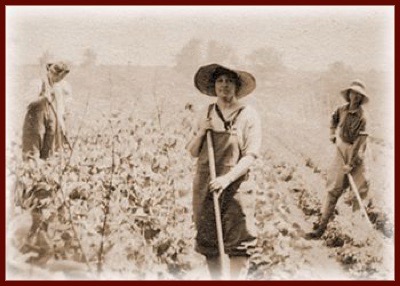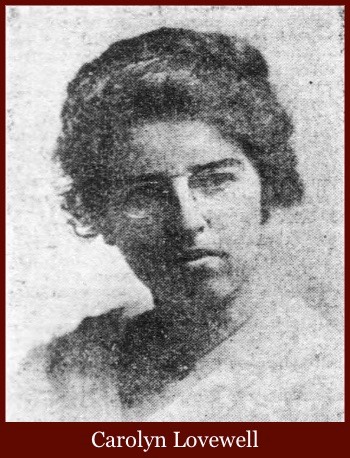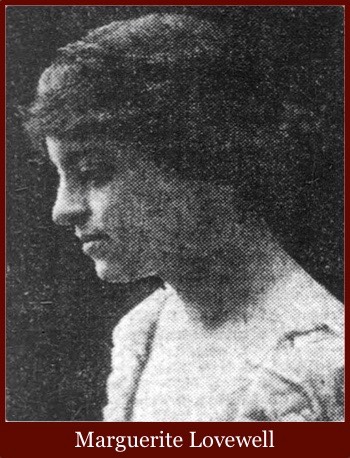It’s the time of year for soul-searching. Bills for the site and domain name come due this month, coinciding with a moment when the number of page views per day tends to evaporite. Fortunately, every time over the past two years that I've reached for the website’s power plug and toyed with the idea of pulling it, along comes a piece of email that makes me pause.
Here are a few comments offered recently by Clarys from Las Vegas:
I once lived in Lovewell KS approx 1943-1957. The site is wonderful. It’s great to learn the history of our li’l Village & its beginnings! Brings back so many memories… Most of my growing up days were there.
I attended Lovewell school thru 10th grade.
We pass thru Lovewell occasionally,not much left, about 5 yrs ago we got to tour our old home as family out front as we cruised the blvd!! The young boys were so excited to think we old ladies were once kids & lived in that house, so we compared life in Lovewell & heard their stories & not much different than ours after 57 yrs!!
Love the pic on site of what I believe is the li’l round mound behind our big house in Lovewell & we 4 daughters spent time on the hill hiking it or snow sledding!! Dodging snakes!! Who needed the Rocky Mtns??? Beautiful countryside there.. Lots of memories! Most of my growing, up days were there. Will never forget the place!
This would be a silly time to walk off the job of researching Thomas Lovewell or the locale and era he personifies, what with fresh bits turning up almost every week. As I was hunting down information on Thomas’s history of G.A.R. membership membership a few weeks back, I ran across an item in the Belleville Telescope from September 19, 1878, announcing that the awarding committee for farm and garden products at the upcoming Belleville fair would consist of "W. S. Latham, S. Wilson and Tom Lovewell.”
With issues of the Topeka State Journal now online at Chroniclingamerica.loc.gov, we can read the original account of Thomas Lovewell’s visit with his cousin Prof. J. T. Lovewell at Topeka in October of 1902, a meeting which I’ve likened to that time the country mouse and the city mouse got together and compared notes. Last year I shared some family information provided by the professor’s great-granddaughter Kathy Knight from New York State, who tells me that she and her husband are building a house on farmland supplied with beehives and an apple orchard, which they’re calling “Lovewell’s Farm.” Kathy might already be aware that she’s not the first member of her family to sample farm living. According to an item in an April 1918 issue of the Journal, her grandmother Marguerite Lovewell (see “Rising Star”) would spend part of the following summer hoeing gardens and milking cows.
Miss Marguerite Lovewell, daughter of Mr. and Mrs. J. T. Lovewell of College Hill, is to be a farmerette this summer. Miss Lovewell has been in Mount Vernon, N. Y., this winter where she has been teaching voice. She is the soprano in the quartet of the First Presbyterian church of Mount Vernon.
Miss Lovewell will enter the Woman’s Agricultural camp at Bedford, New York, where she will be a farmerette all summer. She expects to come to Topeka in September to visit her parents and her sister, Miss Carolyn Lovewell.
The woman’s agricultural camp is a war emergency enterprise founded by Mrs. Charles W. Short, Jr., who implanted in it three fundamental ideas; ‘that all kinds of agricultural labor could and should be done by women; that help should be given to owners of existing farms rather than putting new land under cultivation; that the women who are to do this work must be comfortably housed, adequately paid, and their hours of labor controlled.'
This being the society page of the Journal (which, by the way, was the paper where Marguerite’s half-brother Paul worked as an editor), no description of the operation would be complete without some details about the outfits the “farmerettes” were required to wear and the refreshments that awaited them.
The camp uniform is men’s blue overalls and blue work shirts. Long trousers and strong material are necessary where work in rough places is to be done, and where there is kneeling, such as weeding, any form of a skirt is too much in the way. Cotton gloves, shade hats and stout shoes complete the costume.
The meals are in charge of students of dietetics, who have placed this department on a scientific basis. The workers are given wholesome and plain food.

While the young ladies still managed to look adorable, the meals must have been far less palatable than their customary fare. After America entered The Great War, Bedford Hills was home to what amounted to a patriotic summer camp offering eight hours of farm chores instead of crafts and archery. After carfuls of weary girls were shuttled from neighboring fields back to their home base, they got to take turns milking the herd of cows that grazed on the grounds near their dormitory. Besides enjoying part of the summer among what the paper characterized as “a number of girls from the best families who were engaged by the farmers of the east as farm hands,” Marguerite “conducted two large classes in surgical dressings and taught a few pupils in voice.”
After her farming duties ended in 1918, Marguerite passed an exam which qualified her to sail to France to help with the war effort, provided that her father’s health did not deteriorate. The old professor remained bedridden from a fractured hip suffered on a slippery sidewalk in front of his house in Topeka months earlier.* His life ebbed as summer ended, and both daughters’ plans were put on hold a while longer. Joseph Taplin Lovewell died September 11, 1918, at the age of 85.
Two years earlier, after her own bones mended following a run-in with an automobile on a New York street, Marguerite Barnes Lovewell was named head of the vocal department in the Graham School for Girls in New York City. That same year her sister Carolyn became a voice instructor in the Muller School of Music at Topeka, a position she evidently surrendered in order to assist in her father’s nursing care. An item in the August 28, 1916 edition of the Topeka State Journal features some of the two girls’ accomplishments, and gives a hint of Marguerite’s busy schedule the year she turned 29.


“Last year Miss Lovewell was soloist at the last concert of the Long Island Choral Society at Forest Hills… She gave an Irish program in costume for the Child’s Folk Lore at the Folk Lore rooms. She gave a Japanese fan recital at Columbia University, and a Browning song recital at Columbia University, and a Browning song recital at Hartford, Conn. Besides these she took part in many small entertainments.
Miss Marguerite Lovewell is very attractive and good to look upon with her dark, olive skin, black hair and large gray eyes… Miss Carolyn is a contrasting type to that of her sister. She is a blond with pink and white skin, pretty blue eyes and light hair."
Black hair and gray eyes were everyday characteristics in the Lovewell family, but dark, olive skin? Fully believable in Thai and Japanese roles, Marguerite Lovewell was an exotic, ethnic mystery. Could a DNA test her granddaughter Kathy took shed some light on Marguerite's background?
We’ll see.
* I originally said his fall had happened over a year earlier, misled by a collection of obituaries of Yale graduates. He fell in January 1918 and died the following September.
Portraits from the Topeka State Journal courtesy Chronicling America - Library of Congress
Picture of Farmerettes at Bedford, New York, in 1917 from “The Hipsterette" courtesy Barnard College Archives